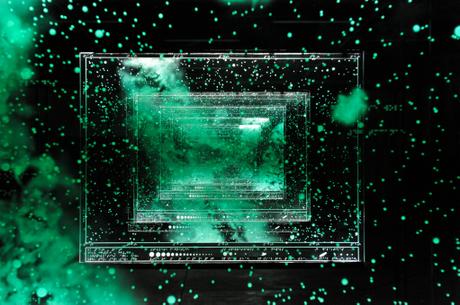‘The Blind Astronomer’ includes various sculpture works but the main installation consists of a series of star maps, displayed one after another on large glass panels, supported and lit, where a viewer can walk in-between.
The concept for the work arose from a connection between Braille and star charts: each uses a coding system of dots to convey information.
Not only are the star maps presented as a physical experience, but the necessary information is also written in Braille. This limits the experience for the sighted viewer, who can see the stars but without the information. The blind person has a more informative experience but cannot totally grasp the visual impact of the night sky. Both the blind and the sighted therefore remain in the dark. . The first space is filled by a large-scale installation that the viewer can move through.

The successive glass panels create the spatial effect of infinity; the stars in the sky appear to float in the darkness. The second space is an accurate star atlas for the blind as well as a “star table”. It involves two interactive tables with glass panels depicting different parts of the night sky, which can be manipulated by the viewer. In the last space, the focus shifts to be about the conventional representation of the universe. The works are in stone and glass. The project relies to a large extent on the exchange of senses.
You must feel to see to understand. Hopefully this will inspire people to start looking (and touching) again… even if it is only for a short while. Visitors will enter a darkened space with the only light coming from the artworks themselves. The exhibition runs until the 27 March 2013 at MOAD in the Maboneng Precinct in Johannesburg (near Arts on Main).



